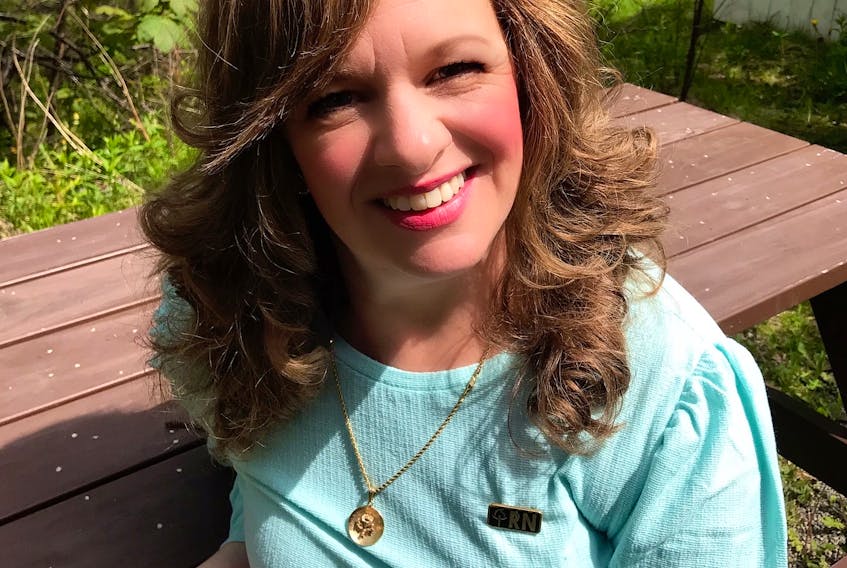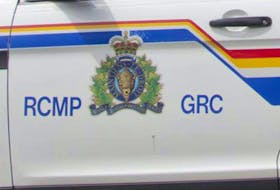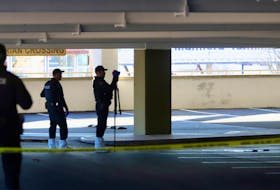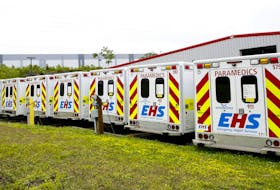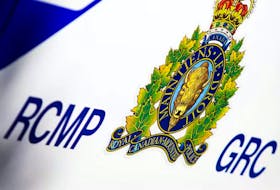ST. JOHN'S, N.L. — Part of a series
Many days, Suzette Spurrell’s husband would leave sandwiches and other meals outside the door of her home office in a spare room at their Holyrood home.
She barely moved from her chair during continuous days that stretched to 12-14 hours.
It was work that would underpin the flattening of the curve of the COVID-19 crisis.
The essential workers included nurses, doctors, bus drivers, cleaners, truckers, grocery store workers and many more, all of them heroes.
But there are some who were pretty much invisible, while their passion and dedication were resolute.
“I feel we’re the truly hidden heroes of this pandemic,” said Spurrell, a communicable disease control (CDC) nurse co-ordinator with Eastern Health.
Her first day back after a sunshine vacation in January, Spurrell opened an email from her director asking what she knew about a novel coronavirus in China.
And so began the team's work to help develop the public health guidelines for when COVID-19 reached this province.
“It feels like a year ago,” Spurrell said of all that has happened since then.
For all of her career, she has been involved in public health, first as a public health nurse and then moving into communicable disease control, including responding to the H1N1, SARS and ebola viruses.
“That helped me prepare somewhat for COVID-19, but the intensity of the work is nowhere near the same,” said Spurrell.
What began as a few travel-related cases became a game changer in March when what is now known as the Caul’s Cluster — the cases traced to visitations at the St. John’s funeral home — made itself known. (Its intensity as a major outbreak made national headlines.)
“I will never forget as I was sitting at my desk and we get an automatic response come into our email if we get a case of a communicable disease,” Spurrell said.
“And it is set up to let me know if we had a case of COVID come in and we had 10 cases come in all at once. That was basically the start of the Caul’s Cluster.”
The need for extra help was immediate and Spurrell trained 40 nurses as the team grew to 50 to work their way through the thousands of cases referred by the 811 health line. There were teams in each health region, but Eastern Health, as the largest, had the brunt of the cases.
Besides dealing with the referrals and those who needed to be tested, the team had to do the contact tracing of anyone who could have been exposed.
“We didn't leave a stone unturned, I can guarantee you that,” she said.
Their job involved informing people of their test results, trying to ease their anxiety when it was positive and working with those clients throughout their COVID-19 experience, many of whom recovered at home, while others became critically ill.
They advocated for those shunned by their communities, cried with the loved ones of the three people whose lives were taken by the disease, and cheered for each and every person who recovered.
‘We got to know every single one very well from our conversation over the course of the disease. They became like family,'' said Spurrell.
Each member of the team was tucked away alone in their rooms at home, but they would hold daily morning meetings over the Teams app, to set out their game plan for the day, but also supporting each other with laughter and tears through the dark days.
Spurrell said their personal anxiety in those early weeks was high as they worked to keep COVID-19 from spreading throughout communities and she was terrified of the coronavirus hitting long-term care homes.
"We would be in trouble, they are so high-risk,” she said. “It was like a roller coaster ride.”
People they contacted were worried and upset, but she said the self-isolation rules and public health guidelines were explained and the patients were co-operative, as the last thing they wanted to do was to spread it to others.
Though they had no time to watch the daily briefings by Health Minister Dr. John Haggie, Premier Dwight Ball and Chief Medical Officer of Health Dr. Janice Fitzgerald, Fitzgerald’s summary issued each day on the status of the province's COVID-19 cases was like their report card.
“When we had a lot of cases, it felt like we were falling. We wanted to see no cases,” Spurrell said.
Nights were restless, too.
“I would probably be awake half the night with 1,000 things on my mind to pass along to the team for the day,” she said.
The worst day for her was more than 20 cases in a single day and the fear of it getting away from them.
“We managed it. … Every day, we went in as a new day to do the best we can,” she said.
And then there was the joy of consecutive days with zero cases.
“We realized we did this,” Spurrell said.
As the team tracked down people who had contact with those testing positive for COVID-19, due to health care privacy laws, they could not reveal who had exposed them.
There were no fancy apps, but pen and paper and old-fashioned detective work.
One might imagine they were a bit of a virtual Bletchley Park (the famed British intelligence team in which codebreakers worked secretly, but had a major impact on the outcome of the Second World War) cracking the path of COVID-19 in this province.
In one month alone, they logged 6,000 hours.
“It takes a lot of precision and skill,” Spurrell said.
One person who was unaware of being infected and didn’t self-isolate could potentially translate into 170 cases, she said.
It was weeks before she left the house, and her husband, Trevor Pond, did all the grocery shopping and meal preparation.
Pond and her mom and dad, by phone, would relay the tough tone Haggie took in the briefings about adherence to bubbles, social distancing and bans on gatherings, as well as the interest in the work of public health.
While interventions such as stop-smoking initiatives usually take years to see results, to see the pandemic shift down into Alert Level 3 in the span of three months has been amazing, she said.
The idea of not opening up the province too quickly was imperative, Spurrell said.
“If we stop now, we end up back where we were and we have to start all over again,” she said.
With the trend of no new cases, Spurrell is hopeful for a bright future because of not only the provincial government and public health efforts, but the attention paid to the guidelines by the people of Newfoundland and Labrador.
“I think we’re in a better place now,” Spurrell said.
“It was so intense, so many hours straight where we didn't even know when we would see the light of day. Now we can.”
Even if a second wave of the coronavirus comes, they know exactly what to do, she said.
People’s habits have changed for the better, she said, with the adherence to hand washing and avoiding crowding each other.
While the COVID-19 vigilance continues, the team is back down to 10 as they shift some focus to other matters, such as preventative childhood and adult vaccines for other illnesses and diseases — they vaccinated more than 50,000 people last year — as well as tackling any other outbreaks of such things as meningitis, tuberculosis and sexually transmitted diseases.
Chlamydia, for example, sees about 650 cases a year in the Eastern Health region, but has been much lower in numbers so far this year. There’s a fear of a spike in some of those diseases as restrictions are relaxed and bubbles expand, however.
Spurrell said the COVID-19 job will be done when public health and CDC nurses get their hands on a vaccine.
“The circle will be closed,” she said.

